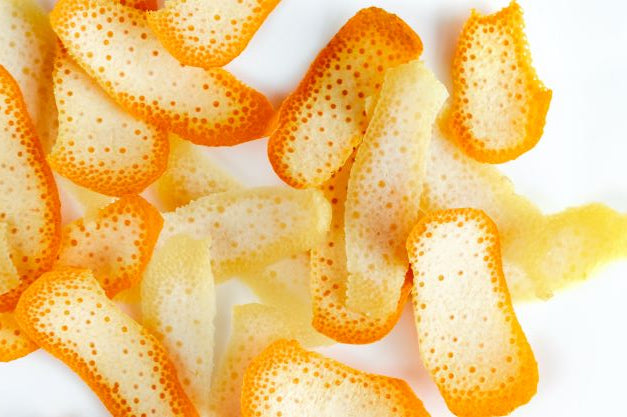What are bioplastics and why they might not be a great idea
“BIOPLASTICS - SOMETIMES FANTASTIC, SOMETIMES PROBLEMATIC”
Bio-plastics - Doesn't this name sound a bit like out-of-the-box science fiction or kinda sneaky and sly? Well, that's exactly not the case. It isn't as tricky as it may sound to you and not as futuristic as it may seem! Did you know that the very first man-made plastic was bioplastic, which debuted in 1862 and was manufactured from a sustainable source? This might be a mind-shaking fact for almost all of us. But you've probably been utilizing bioplastics in your house for quite some time. A detergent bottle is a common example that you've probably seen. So, what's the big deal about bioplastics? For that, let us first understand what bioplastics are and how are they made?
what are bioplastics?
What exactly are bioplastics? Bioplastics are plastics made from renewable biomass sources such as vegetable fats and oils, corn starch, straw, woodchips, sawdust, and recovered food waste, among others. Some bioplastics are made by processing natural biopolymers such as polysaccharides directly, while others are made chemically from sugar derivatives and lipids from plants and animals, or biologically from sugar or lipid fermentation. Common plastics, on the other hand, such as fossil-fuel plastics, are made from petroleum or natural gas.
types of bioplastics
Bioplastics are being employed in non-disposable carpets, plastic pipes, phone casings, 3D printing, automobile insulation, and medical implants, as well as in disposable products such as packaging, containers, straws, bags, and bottles.
Bioplastics are divided into two categories.
- POLYLACTIC ACID
PLA is commonly manufactured from corn starch, cassava, or sugarcane sugars. It's edible and carbon-neutral. PLA is degradable - but this happens only industrial composting facility when many conditions are met. So let us assume, for all practical purposes, that in India, PLA is not getting recycled yet.
Corn kernels are immersed in sulfur dioxide and hot water to convert them to plastic, where its components break down into carbohydrates, protein, and fiber. The maize oil is extracted from the starch after the kernels are pulverized. Long chains of molecules make up starch, just as the carbon chains in plastic are made from fossil fuels. PLA can resemble polyethylene (used in plastic films, packaging, and bottles) and polystyrene (Styrofoam and plastic cutlery) in appearance and behavior.
- POLYHYDROXYALKANOATE or PHAs
Microorganisms that make plastic from organic sources, often genetically altered, produce PHA. PHA is commonly utilized in clinical uses such as sutures, slings, bone plates, and skin substitutes since it is biodegradable and does not harm living tissue; it is also used in single-use food packaging. PHAs are biodegradable but very expensive. So you can assume that no one is using PHA for your bottles - and all of the bioplastic that you find must be PLAs - in short, not biodegradable.
advantages of bioplastics
Some bioplastic production processes emit fewer greenhouse emissions than petroleum-based plastics, depending on the substance. For example, polylactic acid is a bioplastic that can be made using existing manufacturing equipment, making it more cost-effective to make. However, this does not always account for a plastic's complete lifecycle; in many situations, the methods employed to cultivate renewable feedstock (read food grains) have a significant environmental impact, and what occurs after a bioplastic product is utilized might vary greatly. Let's talk about it.
disadvantages of bioplastics
Because of the fertilizers and pesticides used in cultivating the crops, as well as the chemical processing required to transform organic material into plastic, bioplastics production produces more pollutants. Bioplastics also cause greater ozone depletion than ordinary plastics and require a large amount of land use.
And the most severe drawback of bioplastics is - it is made from crops. If the crops that are grown are consumed in the production of bioplastics, then what will we as humans eat?
In India, 189.2 million people are undernourished. And switching completely to Bioplastics might spike up the food scarcity problem. Do you really think it is a smart choice to opt for Bioplastics? Absolutely no! With the production of bioplastics, it seems the land for bioplastics competes with food production.
Also, how can bioplastics be considered a better plastic substitute if they pollute the world's oceans? Bioplastics contribute to air pollution by producing methane, which is again a major issue for us.
other better alternatives
“Bioplastics will not be able to save us. Bidding farewell to single-use plastic items is the best tactic for mopping up our planet!”
End up replacing single-use plastic and bioplastic with sustainable packaging, cutlery, cups, straws, and other products as much as feasible instead of utilizing plastic equivalents.
This is the most planet-friendly recommendation I can think of.
let's sum up
Returning to the 3R (Reduce, Reuse, Recycle) principle, let us all be constantly encouraged to reduce waste at the source and choose items that can be reused before recycling. We need to support all waste reduction projects. Bioplastics can be an option if the production and recycling system is adequately planned and implements a circular economy system correctly and appropriately, allowing it to disintegrate fully without leaving residual waste or causing new difficulties.
Though Bioplastics benefit us in one way and are not as harmful as Microplastics, still Our goal should be - not to use bioplastics to replace conventional plastics. We must devise a solution that allows us to continue to use plastics while avoiding these significant issues. We should focus on a future where there's no plastic. Bioplastics aren't the be-all and end-all solution as they cannot help us live a more sustainable existence.
So, to you, is bioplastic a boon or a bane? THINK! Till then, let us stick to the 3 R and reduce trash production as much as possible because this is the ONLY effective method to help our Planet. But to be honest, on our part, Bioplastics cannot be said to be better than plastics. Using them may be the right choice now, but remember - it might seem a good path to walk on, but is not a perfect path to rely on!
Photo by @agenlaku on Unsplash
Author - prarthana is a postgrad physics student, a fervent physicist who loves to revitalize and tweak articles on sustainability and technology. she can be found at instagram and linkedIn






